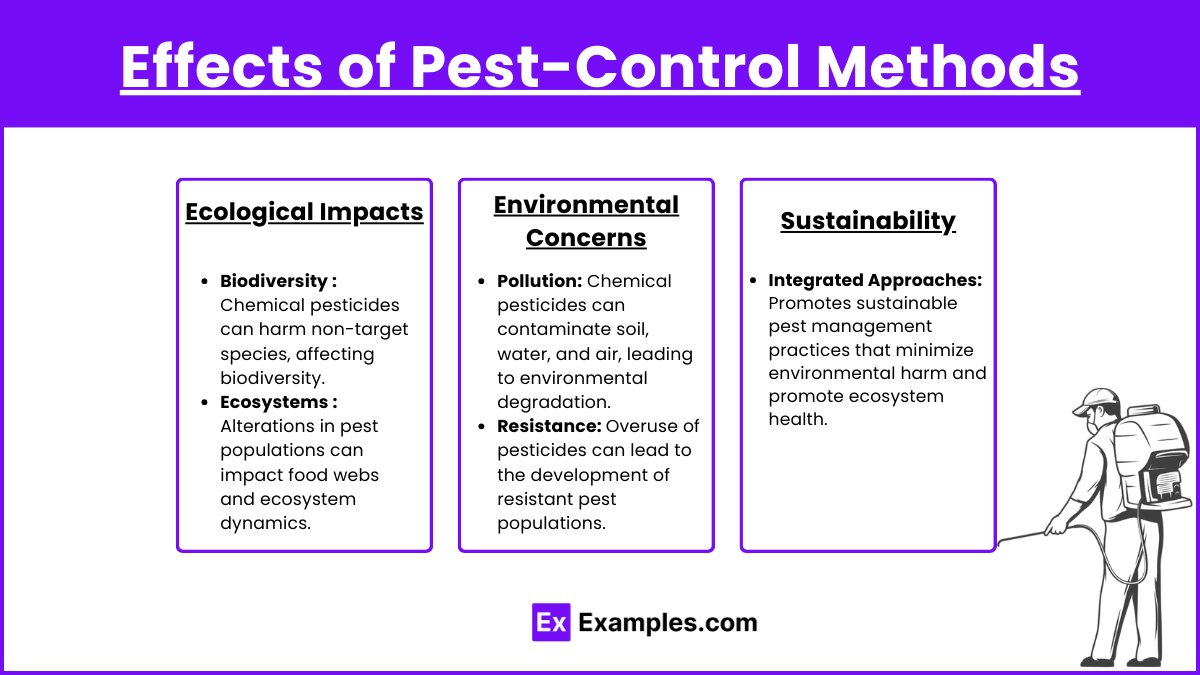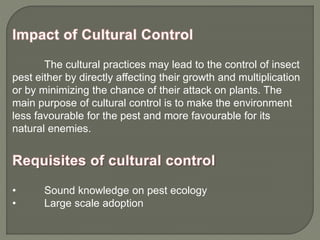Our Pestwise PDFs
Our Pestwise PDFs
Blog Article
Pestwise Can Be Fun For Everyone
Table of ContentsGetting The Pestwise To WorkThe Ultimate Guide To PestwisePestwise Things To Know Before You Get ThisSome Ideas on Pestwise You Should KnowPestwise for BeginnersPestwise - TruthsA Biased View of PestwiseThe Buzz on PestwiseGet This Report about PestwiseThings about Pestwise
An organism must not be considered a parasite until it is verified to be one. Groups of pests include: constant parasites that arc nearly always existing and require regular control. occasional. migratory, or cyclical bugs that require control periodically or intermittently. prospective insects that do not require control under normal conditions.Accurate identification is the first action in an effective pest monitoring program. Never ever try a bug control program up until you are certain of what the parasite is. Exterminator. The even more you recognize regarding the parasite and the aspects that influence its growth and spread, the simpler, more cost-effective, and more successful your pest control will certainly be
Pestwise Things To Know Before You Buy
As a licensed applicator, you should recognize with the pests you are likely to come across in the kind of operate in your qualification classification. To be able to identify and manage parasites, you need to know: the physical attributes of the parasites most likely to be come across. characteristics of the damage they create, their development and biology, whether they are constant, occasional.
Cause as little harm as possible to everything other than the insect. It might set you back more to regulate the bug than would certainly be shed because of the insect's damage.
Rumored Buzz on Pestwise

If such conditions are present, you can take steps to avoid the plant condition organisms from hurting the desirable plants. is a typical objective in lots of pest situations. The intent is to reduce the variety of pests to a degree where the harm they are creating serves. Once a bug's presence is identified and the decision is made that control is essential, suppression and prevention typically are joint objectives.
is an unusual objective in exterior pest circumstances, due to the fact that it is difficult to attain. Normally the objective is prevention and/or reductions. Obliteration is occasionally attempted when a foreign bug has been accidentally presented but is not yet developed in a location. Such eradication methods frequently are supported by the Government.
The Only Guide for Pestwise
gypsy moth, and fire ant control programs are examples. In interior locations, elimination is a much more common goal. Enclosed settings normally are smaller, less complicated, and more conveniently controlled than exterior areas. In many confined areas, such as residences; colleges; workplace buildings; and healthcare, food handling, and food preparation facilities, specific pests can not or will certainly not be tolerated.
Thresholds might be based on esthetic, wellness, or economic considerations. These degrees, which are referred to as "activity thresholds," have actually been figured out for many bugs. A limit usually is set at the degree where the financial losses brought on by parasite damage, if the pest population remained to expand, would be higher than the price of controlling the bugs.
The visibility of any rodents in food handling facilities forces activity. In homes, individuals normally act to control some parasites, such as rats or roaches, even if only one or a couple of have actually been seen. In most pest control circumstances, the location to be protected ought to be kept an eye on (inspected or scouted) often.
Indicators on Pestwise You Need To Know

There is zero tolerance for the presence of germs in operating spaces and other sterile locations of health treatment centers. In these circumstances, routine parasite control measures are required to stop pests from going into a location and to get rid of any type of bugs that may be present. Bug control entails more than merely identifying a parasite and utilizing a control strategy.
All of these might be impacted by the insect control gauges you choose. Unless you take into consideration the feasible effects on the whole system within which the insect exists - Mosquito Control.
Unknown Facts About Pestwise
The actions of every kind of microorganism or component sharing the website usually affect the activities and well-being of lots of others. When the balance is disrupted, particular organisms may be destroyed or decreased in number, and visit their website others often the insects - might dominate. Integrated bug monitoring is the incorporating of proper insect control tactics right into a single strategy (method) to minimize pests and their damages to an appropriate level.
Depending only on pesticides for bug control can trigger insects to develop resistance to chemicals, can trigger outbreaks of various other pests, and can harm surface areas or non-target microorganisms. With some kinds of insects, use pesticides as the only strategy will certainly accomplish extremely poor control. To address insect problems. you have to: identify the pest or parasites and figure out whether control is warranted for each.
Climate problems, especially temperature, day length, and moisture, affect pests' activity and their price of recreation. Parasites may be eliminated or subdued by rainfall, freezing temperature levels, drought, or other adverse weather.
The Ultimate Guide To Pestwise
Birds, reptiles, amphibians, fish, and mammals feed on some parasites and help control their numbers. Several aggressive and parasitical insect and insect-like varieties feed on various other microorganisms, some of which are insects.
Pest populations can flourish just as long as their rood and water supply lasts. When the food resource - plant or pet - is exhausted, the parasites pass away or end up being inactive.
More About Pestwise
Natural controls frequently do not control insects swiftly or completely sufficient to stop undesirable injury or damage. Then other control steps should be utilized. Those readily available include: host resistance, biological control, cultural control, mechanical control, hygiene, and chemical control. Some plants, pets, and frameworks stand up to pests far better than others.
Usage of immune kinds, when readily available, aids maintain bug populations below hazardous levels by making problems less beneficial for the insects. Host resistance works in 3 major ways: Chemicals in the host repel the pest or prevent the bug from finishing its life process. The host is much more energetic or forgiving than various other ranges and therefore much less likely to be seriously harmed by parasite attacks.
8 Simple Techniques For Pestwise
Biological control includes the use of natural opponents bloodsuckers, predators, and microorganisms. You can supplement this natural control by releasing more of a parasite's opponents right into the target area or by introducing brand-new adversaries that were not in the area before.
But, under proper conditions, sufficient control can be achieved to eliminate the threat to the plant or animal to be safeguarded. Biological control also includes methods by which the insect is naturally modified, as in the manufacturing and release or multitudes of clean and sterile men and the usage of pheromones or juvenile hormones.
Positioned in a trap, for example. they can attract the bugs in an example area to ensure that pest numbers can be estimated. Pheromones also can be a control device. Often a produced copy of the pheromone that a female insect uses to attract men can be used to confuse males and prevent mating, causing lower numbers of pests.
The 15-Second Trick For Pestwise
(https://josehawkins01.wixsite.com/my-site-1/post/the-ultimate-guide-to-pest-control-services)Social techniques in some cases are utilized to reduce the numbers or pests that are assaulting cultivated plants. These techniques alter the environment, the condition of the host plant, or the behavior of the insect to stop or reduce an invasion. They disrupt the typical connection in between the parasite and the host plant and make the pest much less likely to make it through, expand, or replicate.
Tools, makers, and various other approaches utilized to manage bugs or change their atmosphere arc called mechanical or physical controls. Traps, displays, obstacles, fencings, nets, radiation, and electrical power often can he utilized to stop the spread or insects into a location. Lights, warm, and refrigeration can alter the environment sufficient to reduce or get rid of some parasite populaces.
Report this page